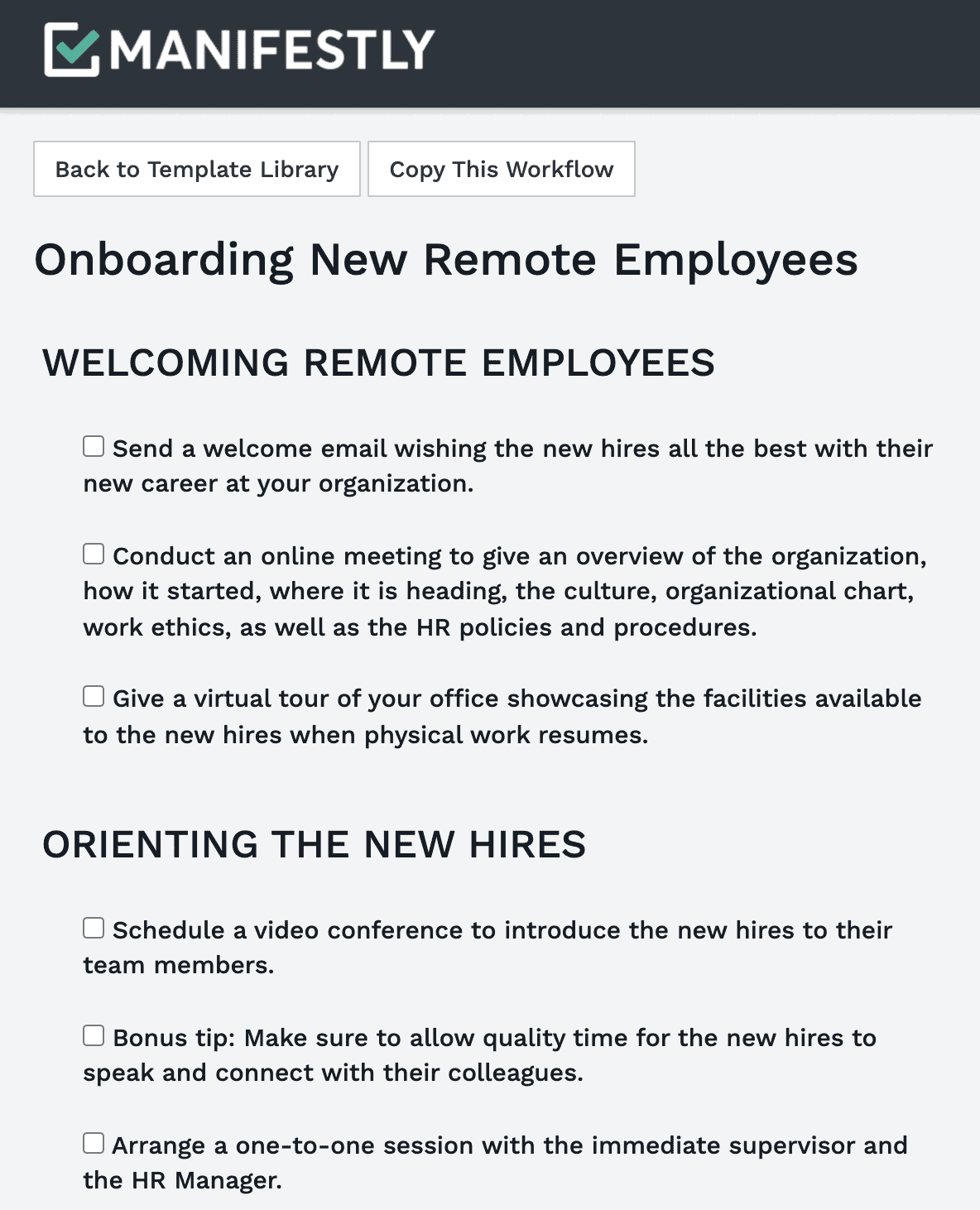Continuing in our series of Human Resource and covid19 pandemic related blog posts for the Human Resource Professional. Our previous article was HR Checklists for Employees Returning to Work After Covid-19.
Remote Work is the New Normal
Remote working is no longer a future scenario. The pandemic has made “work from home” the new normal. In fact, “work from home” and “flexible working hours” have become a huge trend in Human Resource Management. Remote jobs are now embraced by people all over the world as they provide much more autonomy and flexibility thereby facilitating better work-life balance.
In reality, remote working brings many advantages to a business in terms of reduced operational costs related to workspace, food, utilities, and other tools and equipment. Besides, hiring remote workers allows you to expand globally and have a more diverse workforce consisting of people from other nations. Such a talent pool would in turn support a business in many ways including 24/7 operations due to different working hours, and much-personalized customer support owing to expertise in different cultures and languages. In sum, hiring remote workers facilitates better outcomes, increased productivity, greater employee satisfaction, and higher retention rates.
Considering the many advantages of remote working, organizations are now looking for ways to optimize their remote worker hiring process. Yet, it also poses several unique challenges for an organization including having to screen a large number of applications, the technical difficulties in conducting virtual interviews, privacy and security risks associated with online interviews, difficulties in analyzing the personality characteristics of a candidate without meeting physically, etc.
This checklist will guide you in recruiting, selecting, and hiring the best remote workers for your company while also beating the above challenges successfully.
Recruiting Remote Workers Checklist
Recruiting people for remote work positions cannot be done the same way you recruit on-site employees. In fact, your HR team needs to adapt to new practices if you are to attract the right candidates. Strategies like active recruiting have gained popularity in contemporary virtual work offices as it allows an organization to identify potential candidates who could be a great fit for the position, yet are not actively searching for jobs. Besides, working remotely requires a lot of self-discipline and employees need to be tech-savvy in order to be connected. Hence, such traits and capabilities should also be taken into consideration when recruiting remote workers. The following checklist will guide you in attracting the right talent for the remote working position.
HIRING NEED
- First of all, understand the hiring requirement. Is it to fill a vacated position or is it a new position created due to business expansion initiatives?
- If it is a new position, decide how to align the job with the organizational goals.
- Compile a comprehensive recruitment plan that covers the following.
- The positions you need to hire remote workers
- The prioritized positions based on their relative importance to the organization and urgency
- A recruitment calendar indicating when to recruit
- The budget allocation for the process
- The hiring team, which stages of the hiring process they involve and what their responsibilities are
JOB ANALYSIS
- Conduct a thorough job analysis to gather information about the job activities, and responsibilities attached to the position, and the persona of the most suitable candidate.
- Prepare a job description for the new position or update the existing one considering the requirements for a remote working position. This should include the following.
- The job title – include words like “remote” or “work from home” for easy identification
- The roles and responsibilities – outline the day to day tasks and how they contribute to organizational goals
- The details of the position – mention whether it is a part-time or full-time position, if the position is 100% remote or the employee is required to physically report to the office sometimes, and if the position is open to people from all continents or to specific countries
- Company description – include what your business is, your vision and mission, the values, the culture, the benefits of working for your company
- Compensation – mention the salary, and other perks like medical covers, bonuses, stock options, commissions, learning opportunities, etc.
- Decide what you need to look for in a remote employee and map out the skills and qualities that a candidate should ideally possess to be effective in the role.Bonus tip: You may add the following.
- Communication skills
- Collaboration skills
- Adaptability
- Self-motivation
- Cultural fit
- Time management skills
- Ability to work independently with minimum guidance
- Devise the job specification for the remote position. This should cover the following in order to ensure job-fit and organization-fit.
- Educational qualifications
- Previous work experience
- Technical skills
- Language skills
- Personality traitsBonus tip: Include other essential requirements for the success of remote working.
- A distraction-free home office/suitable workspace
- A laptop with a decent speed, storage, and compatibility with the company software
- A high-speed internet connection
CANDIDATE EVALUATION STRATEGIES
- Determine the strategies that you can adopt to evaluate the candidates.Bonus tip: You may consider the following.
- A test to assess job-related knowledge
- A task to complete with a strict deadline
- Personality tests
- Culture tests
- Attitude tests
- Job simulations
- Get the test questions and the interview questionnaire ready.
- Craft a rubric, customized for each job position, with measurable indicators to assess the candidates on core competencies.
JOB ADVERTISEMENT
- Identify alternative advertising platforms and choose the most feasible ones for your business to advertise remote jobs.
- Get the videos, visuals, and content ready for the job advertisement.
- Create a professional and attractive job advertisement highlighting the remote employee value proposition (EVP).
- Advertise the position on selected platforms.
- Directly reach out to potential candidates via social media platforms.
You can use this checklist template for recruiting remote workers in our checklist templates area.
Checklist for Selecting the Best Remote Workers
Screening applications remotely using the latest software is much more convenient and inexpensive compared to traditional candidate screening methods. It will not only save a lot of time but would also help yield the best candidates for the position. However, the process may sound challenging as it is difficult to analyze the true character of a candidate without meeting in person. Hence, it is important that you use multiple screening and assessment techniques to cross-check the candidates’ suitability for the position. Also, it is best to have a panel of interviewers to avoid any stereotypes or biased decisions. The following checklist will assist you to overcome such issues and select the ideal candidates for the remote job position.
INITIAL SCREENING
- Conduct an initial review of all applications to eliminate those that do not meet the eligibility criteria for the remote job.
- Review the qualified applications against the hiring rubric and determine the ones you want to interview.
- Do an initial phone screening to understand the candidates a little better and see if they match the persona of the ideal candidate for a remote job.
PRELIMINARY ASSESSMENTS
- Test the remote work skills of the candidate by giving them an assessment to complete within a strict deadline.
- Assess the qualified applicants with standard tests for personality, attitudes, and culture.
- Get ready for the remote candidate interview with a planned approach.
Bonus tip: You may decide on the following.- How many interviews to conduct and what each should focus on
- The date, time, and duration for each interview
- The availability of the hiring team and the immediate supervisor on the specified dates
- Whether interviews will be conducted virtually and if on-site, decide on the logistics of virtual interviews
- Conduct an initial interview focusing on the candidate’s work history, previous track records, and availability to commence the remote job.
- Screen the candidates further, with the second round of more focused and in-depth interviews involving the Line Manager/immediate supervisor in the process.
- Conduct a final interview of the top candidates, by getting the senior management team into the discussion.
- Have a short debrief after the interview session to discuss the opinions of all the hiring parties and take an objective and rational final decision.
- Select a backup candidate as well if in case the chosen applicant declines your offer.
IN-DEPTH ASSESSMENT
- Verify the educational credentials of the selected candidate.
- Conduct a background check to review the credit history and criminal records of the candidate.
- Do a reference check to verify the information provided by the candidate pertinent to previous work experience, job responsibilities, and workplace conduct.
Hiring Remote Workers Checklist
Once the best candidate is chosen, the next step involves signing the contract of employment. This should be done after negotiating the terms and conditions in the offer letter. Also, it is vital that you adhere to the statutory requirements and get the necessary legal documents filled and submitted without delay. The following checklist will guide you in streamlining the final stage of the remote worker hiring process.
- Update the selected candidate about your hiring decision.
- Connect him/her with the HR Department for any queries and clarifications.
- Extend an initial offer letter inclusive of the following details, as negotiations are likely to happen.
- Job title and the responsibilities
- Salary and benefits
- Remote working policy
- The expiration date of the job offer
- The official date of work commencement
- The aspects of the offer letter that are negotiable
- Once the offer letter is accepted, get the updated employment contract signed by the candidate. Be sure to include the length of employment and the termination conditions.
- Ensure that you get the legal documents pertaining to new hires completed on time such as the Form W-4, Form I-9, and E-Verify, and the State Tax Withholding Form.
- Get employee signature on internal documents and forms like the non-disclosure agreement, and employee benefits documents.
Obtain personal data and emergency contact details of the new hires. - Update the personnel files of the new hires.
- Follow up with the newly hired remote worker and update him/her about the onboarding process.
Considerations for Future
- Analyze the effectiveness of the remote worker hiring process and document the areas that need improvement in the next hiring attempt.
- Continuously review and update the remote working policies and hiring policies for virtual job positions.
- Streamline the hiring process by using online recruitment tools, application tracking systems, and advanced video conferencing software.
Wrapping Up
It is evident that not everyone is successful in working virtually and hence hiring employees for remote work should be done with caution. Accordingly, organizations should use a thoughtful and planned approach to identifying professional, responsive, and tech-savvy candidates for remote working positions. To facilitate a more successful remote employee hiring process in the future, your organization could consider investing more in employer branding by building a strong presence online.
You can find this HR Checklist for Recruiting, Selecting, and Hiring Employees for Remote Jobs in the HR workflow checklist templates section of Manifestly.




